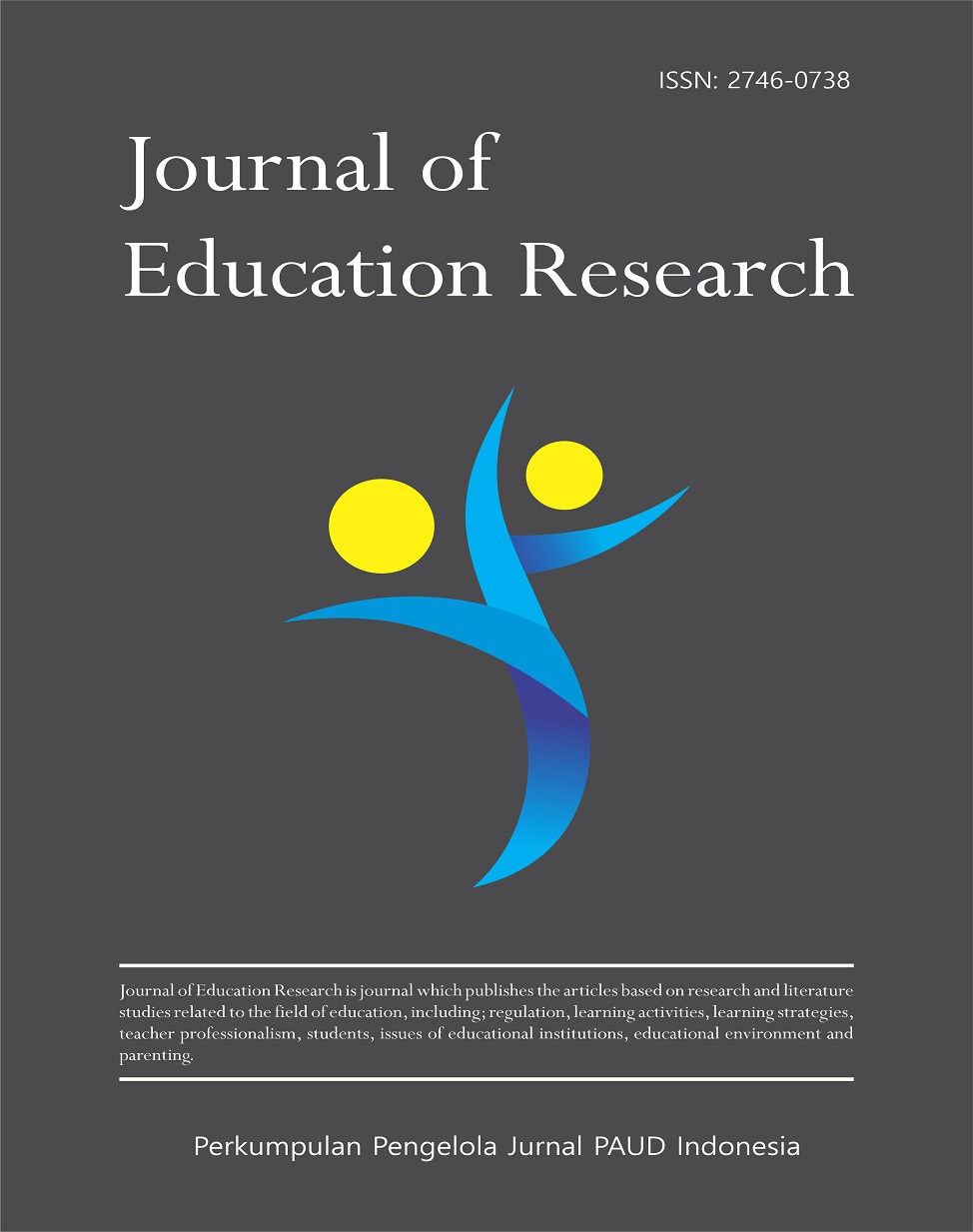Tinjauan Literatur Sistematik Metode pada Sistem Pakar dalam Mendiagnosis Penyakit Mental
DOI:
https://doi.org/10.37985/jer.v6i4.2162Keywords:
Sistem Pakar, Penyakit Mental, Systematic Literature ReviewAbstract
Sebagai masalah yang kompleks di seluruh dunia, penyakit mental membutuhkan solusi inovatif untuk diagnosis dan perawatan yang lebih baik. Salah satu metode yang menguntungkan adalah penggunaan sistem pakar, yaitu jenis kecerdasan buatan yang memiliki kemampuan untuk meniru proses pengambilan keputusan manusia. Melalui Systematic Literature Review (SLR) ini, efektivitas dari metode-metode yang digunakan dalam pembuatan sistem pakar untuk diagnosis penyakit mental. Studi ini mengidentifikasi berbagai metode Certainty Factor, Fuzzy Logic dan Tsukamoto, Decision Tree, Teorema Bayes, Dempster Shafer, Forward Chaining, Backward Chaining dan Rule Based System dengan memanfaatkan 12 artikel yang memenuhi Quality Assesment. Hasilnya menunjukkan bahwa metode-metode ini mampu memberikan diagnosis yang sangat akurat. Namun, masalah seperti kebutuhan akan data berkualitas tinggi dan interpretabilitas hasil harus diselesaikan. Selain itu, penelitian ini memberikan saran peluang pengembangan penelitian selanjutnya seperti mengintegrasikan dua buah untuk meningkatkan akurasi, efisiensi, dan aksesibilitas diagnosis penyakit mental.
Downloads
References
Abas, M. I., Nugraha, D. W., Asminar, A., & Isminarti, I. (2023). Systematic Literature Review of Expert System. TIN: Terapan Informatika Nusantara, 3(12), 497-502. https://doi.org/10.47065/tin.v3i12.4136
Arifin, S. F., & Rahayu, S. (2023, November). Sistem Pakar Deteksi Dini Gangguan Kecemasan (Anxiety) Menggunakan Metode Certainty Factor dan Forward Chaining Berbasis Web. In SEMNASTERA (Seminar Nasional Teknologi dan Riset Terapan) (Vol. 5, pp. 400-403).
Daivan, F., Saripurna, D., & Siambaton, M. Z. (2024). E-Diagnosis Gangguan Kecemasan Menyeluruh Menggunakan Fuzzy Inference System (FIS) Tsukamoto. Hello World Jurnal Ilmu Komputer, 3(1), 9–27. https://doi.org/10.56211/helloworld.v3i1.513
Fernando, Y., Napianto, R., & Borman, R. I. (2022). Implementasi Algoritma Dempster-Shafer Theory Pada Sistem Pakar Diagnosa Penyakit Psikologis Gangguan Kontrol Impuls. Insearch: Information System Research Journal, 2(02), 46-54. https://doi.org/10.15548/isrj.v2i02.4359
Kusuma, R. P., & Nas, C. (2023). Expert System to Diagnose Mental Health Disorders Using the Dempster Shafer Algorithm. Journal of Information Systems and Informatics, 5(1), 391-406. https://10.51519/journalisi.v5i1.461
Larasaty, R., & Prasetyaningrum, P. T. (2024). Sistem Pakar Diagnosa Gangguan Kecemasan Pada Difabel Menggunakan Metode Forward Chaining Berbasis Web. Journal of Computer and Information Systems Ampera, 5(3), 138–154. https://doi.org/10.51519/journalcisa.v5i3.473
Manullang, B., & Pane, E. P. (2024, November). Sistem Pakar Untuk Diagnosa Kesehatan Mental Menggunakan Metode Decision Tree Berbasis Android. In SEMASTER: Seminar Nasional Teknologi Informasi & Ilmu Komputer (Vol. 3, No. 1, pp. 25-36).
Mayatopani, H., Subekti, R., Yudaningsih, N., & Sanwasih, M. (2022). Pengembangan Sistem Pakar Diagnosa Gangguan Mental dengan Mesin Inferensi Menggunakan Algoritma Dempster-Shafer Theory. Jurnal Buana Informatika, 13(1), 66-76. https://doi.org/10.24002/jbi.v13i1.5568
Moher, D., Liberati, A., Tetzlaff, J., & Altman, D. G. (2009). Preferred reporting items for systematic reviews and meta-analyses: The PRISMA statement. Annals of Internal Medicine, 151, 264–269. https://doi.org/10.7326/0003-4819-151-4-200908180-00135.
Muhammad, K. S., Fitrani, A. S., Setiawan, H. (2024). Sistem Pakar Diagnosa Gangguan Kecemasan (Anxiety Disorder) Menggunakan Metode Forward Chaining. JIPI (Jurnal Ilmiah Penelitian dan Pembelajaran Informatika), 9(1), 194-207. https://doi.org/10.29100/jipi.v9i1.4441
Nopi, N. P., Munandar, M. H., Irawan, F., & Lubis, J. R. (2022). Sistem Pakar Mendiagnosa Gangguan Mental pada Diri Seseorang Mengunakan Metode Certainty Factor. Journal of Applied Computer Science and Technology, 3(1), 157-162. https://doi.org/10.52158/jacost.v3i1.307
Nurhafiyah, I., & Marcos, H. (2023). Sistem Pakar Diagnosis Kesehatan Mental Pada Mahasiswa Universitas Amikom Purwokerto. Komputa: Jurnal Ilmiah Komputer Dan Informatika, 12(1), 49-56. https://doi.org/10.34010/komputa.v12i1.8978
Oguoma, S.I., Uka, K.K., Chukwu, C.A. and Nwaoha, E.C. (2020) An Expert System for Diagnosis and Treatment of Mental Ailment. Open Access Library Journal , 7: e6166. https://doi.org/10.4236/oalib.1106166
Okmayura, F., Vitriani, V., & Novalia, M. (2021). Dempster Shafer Algorithm For Expert System Early Detection of Anxiety Disorders. Lontar Komput. J. Ilm. Teknol. Inf., 12(2), 112. https://doi.org/10.24843/LKJITI.2021.v12.i02.p05
Putri, D. R. D., & Fahlevi, M. R. (2020). Penerapan Teorema Bayes Dalam Mendiagnosa Gangguan Kepribadian Paranoid. J-SAKTI (Jurnal Sains Komputer dan Informatika), 4(2), 545-551. http://dx.doi.org/10.30645/j-sakti.v4i2.246
Putri, S. D. R., Maulana, H., & Aditiawan, F. P. (2024). Sistem Pakar Diagnosa Kesehatan Mental Mahasiswa Tingkat Akhir. JATI (Jurnal Mahasiswa Teknik Informatika), 8(3), 4118-4128. https://doi.org/10.36040/jati.v8i3.9849
R, Turban, R. R. and P. R. (2005). Introduction to Informatio Technology.
Ramzan, M., Hamid, M., Alhussan, A. A., AlEisa, H. N., & Abdallah, H. A. (2023, May). Accurate Prediction of Anxiety Levels in Asian Countries Using a Fuzzy Expert System. In Healthcare (Vol. 11, No. 11, p. 1594). MDPI. https://doi.org/10.3390/healthcare11111594
Russels, S. and Norvig, P. (2003) Artificial Intelligence: A Modern Approach, 3rd Edition.
Sakti, E. M. S., Anugrah, A., & Wagiyati, S. (2022). Sistem Pakar Diagnosis Gangguan Kecemasan Menggunakan Metode Pelacak Ke Depan Berbasis WEB. Jurnal Ilmiah Teknik Informatika (TEKINFO), 23(1), 115-121. https://doi.org/10.37817/tekinfo.v23i1.1884
Saragih, N. E., & Adawiyah, R. (2020). Rancang Bangun Sistem Pakar Mendiagnosa Penyakit Obsessive Compulsive Disorder Dengan Metode Dempster Shafer. Jurnal Ilmiah Informatika, 8(02), 151–156. https://doi.org/10.33884/jif.v8i02.2478
Sholeha, E. W., Sabella, B., Kusrini, W., & Komalasari, S. (2023). Sistem Pakar Penyakit Kesehatan Mental Remaja menggunakan Metode Forward Chaining dan Certainty Factor. Klik-Kumpulan Jurnal Ilmu Komputer, 10(1), 82-92. http://dx.doi.org/10.20527/klik.v10i1.523
Suhendi, H., & Supriadi, A. (2020). Sistem Pakar Diagnosa Gangguan Kecemasan Menggunakan Metode Certainty Factor Berbasis Website. Naratif: Jurnal Nasional Riset, Aplikasi dan Teknik Informatika, 2(2), 13-23.
Sukiakhy, K. M., Zulfan, Z., & Aulia, O. (2022). Penerapan Metode Certainty Factor Pada Sistem Pakar Diagnosa Gangguan Mental Pada Anak Berbasis Web. Cyberspace: Jurnal Pendidikan Teknologi Informasi, 6(2), 119-129.
Suliati, S., Achmadi, S., & Rudhistiar, D. (2022). Penerapan Sistem Pakar Untuk Deteksi Dini Mental Illness Dengan Menggunakan Metode Forwad Chaining Dan Certainty Factor Berbasis Website. JATI (Jurnal Mahasiswa Teknik Informatika), 6(2), 1087-1095. https://doi.org/10.36040/jati.v6i2.5464
Tasari, A., Simanjutak, E. A. M., Christian, G., & Sinaga, R. M. (2023). Sistem Pakar Diagnosis Kondisi Kesehatan Mental Masyarakat Usia 18-23 Tahun Menggunakan Metode Certainty Factor Dan Forward Chaining. Jurnal Teknologi Informasi, Komputer, dan Aplikasinya (JTIKA), 5(2), 173-182. https://doi.org/10.29303/jtika.v5i2.244
Wahyuni, D., & Winarso, D. (2022). Penerapan Metode Rule Based Reasoning Dalam Sistem Pakar Deteksi Dini Gangguan Kesehatan Mental Pada Mahasiswa. Journal of Software Engineering and Information System (SEIS), 2(2), 1-10. https://doi.org/10.37859/seis.v2i2.3991
Downloads
Published
How to Cite
License
Copyright (c) 2025 Tio Doli Raharjo, Billy Hendrik

This work is licensed under a Creative Commons Attribution-ShareAlike 4.0 International License.
Authors who publish with this journal agree to the following terms:
- Authors retain copyright and grant the journal right of first publication with the work simultaneously licensed under a Creative Commons Attribution-ShareAlike 4.0 International License that allows others to share the work with an acknowledgement of the works authorship and initial publication in this journal.Â
- Authors are able to enter into separate, additional contractual arrangements for the non-exclusive distribution of the journals published version of the work (e.g., post it to an institutional repository or publish it in a book), with an acknowledgement of its initial publication in this journal.
- Authors are permitted and encouraged to post their work online (e.g., in institutional repositories or on their website) prior to and during the submission process, as it can lead to productive exchanges, as well as earlier and greater citation of published work (See The Effect of Open Access).









